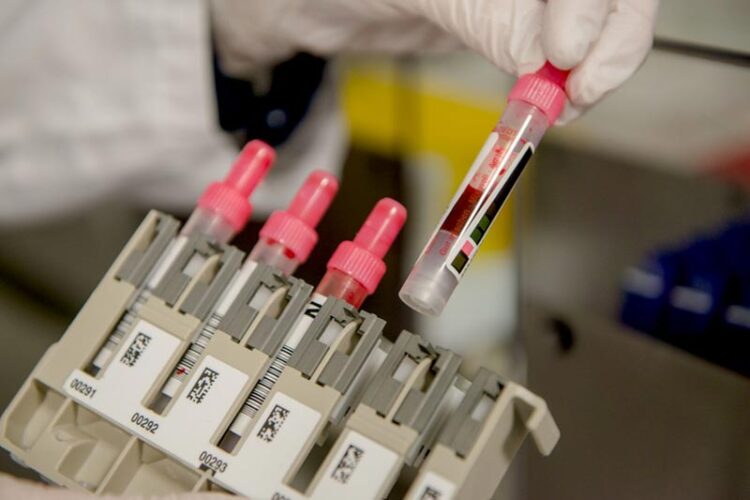Simple and reliable early prediction of diabetes

Two values from a blood sample – that's all it takes to detect the onset of diabetes.
© RUB, Marquard
A simple blood test could perform better than a complex test thanks to mathematical modeling.
Diabetes often remains undetected until it has already damaged organs or nerves. This is partly due to the fact that diagnosis at an early stage is time-consuming and difficult. An international team of researchers headed by Associate Professor Dr. Johannes Dietrich from the Department of Medicine I of Ruhr University Bochum at St. Josef Hospital in Bochum, Germany, has shown that a mathematical calculation based on just two values taken from a blood sample enables the reliable and inexpensive diagnosis of diabetes at an early stage. The researchers published their findings in the Journal of Diabetes on January, 2, 2024.
Diabetes often remains long undetected
“Thirty percent of all people who suffer from diabetes haven’t yet been diagnosed and, consequently, don’t receive any treatment,” points out Johannes Dietrich. This is partly due to the fact that it’s not easy to detect the disease at an early stage. “Diabetes sets in gradually, and our diagnostic options are not sensitive enough to detect it; moreover, they aren’t specific enough, meaning that false positive results can also occur,” stresses Dietrich.
Together with his colleagues from Germany, India, Singapore and the UK, he has researched a new method for the early detection of diabetes. The method, called SPINA Carb, is based on mathematical modeling. All that is required is a blood sample, which is taken in the morning before the patient’s had their breakfast. Two values measured in the sample are relevant: the insulin value and the glucose value. “We enter these values into an equation that describes the body’s control loop for sugar metabolism and break it down according to a certain variable,” explains Johannes Dietrich. The result is a so-called static disposition index (SPINA-DI).
More reliable than other markers
In computer simulations, the research team proved that the new parameter confirms the theory of dynamical compensation, which predicts that Insulin resistance in people with metabolic syndrome is compensated for by the pancreatic beta cells increasing their activity. A subsequent study of three groups of volunteers from the USA, Germany and India supported this assumption. “In all three groups, we found that the calculated SPINA-DI correlated with relevant indicators of metabolic function, such as the response to an oral glucose tolerance test,” outlines Johannes Dietrich. On top of that, SPINA-DI proved more reliable than other calculated markers of glucose metabolism and allowed a more accurate diagnosis.
“The new method is not only cost-effective, but also precise and reliable,” conclude the authors. “It could complement and, in many cases, even replace more complex established methods.”
Journal: Journal of Diabetes
DOI: 10.1111/1753-0407.13525
Method of Research: Computational simulation/modeling
Subject of Research: People
Article Title: A Novel Simple Disposition Index (SPINA-DI) From Fasting Insulin and Glucose Concentration As a Robust Measure of Carbohydrate Homeostasis
All latest news from the category: Health and Medicine
This subject area encompasses research and studies in the field of human medicine.
Among the wide-ranging list of topics covered here are anesthesiology, anatomy, surgery, human genetics, hygiene and environmental medicine, internal medicine, neurology, pharmacology, physiology, urology and dental medicine.
Newest articles

Sea slugs inspire highly stretchable biomedical sensor
USC Viterbi School of Engineering researcher Hangbo Zhao presents findings on highly stretchable and customizable microneedles for application in fields including neuroscience, tissue engineering, and wearable bioelectronics. The revolution in…

Twisting and binding matter waves with photons in a cavity
Precisely measuring the energy states of individual atoms has been a historical challenge for physicists due to atomic recoil. When an atom interacts with a photon, the atom “recoils” in…

Nanotubes, nanoparticles, and antibodies detect tiny amounts of fentanyl
New sensor is six orders of magnitude more sensitive than the next best thing. A research team at Pitt led by Alexander Star, a chemistry professor in the Kenneth P. Dietrich…





















